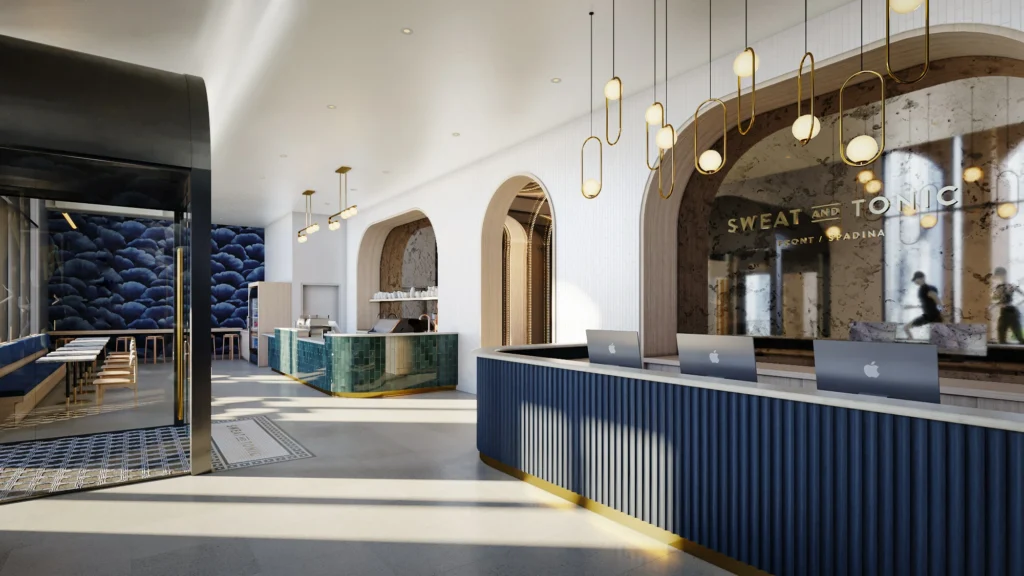How Fitness Brands Can Diversify Their Offerings

James Reyes of Xplor Technologies shares best practices and key trends for fitness businesses looking to venture into new areas
Diversification is a trusted growth strategy in any industry, allowing companies to increase revenue, build better brand recognition and make themselves more resilient to future changes in consumer tastes.
The fitness industry is no different, with brands increasingly looking to offer new services, workout modalities and physical spaces to not only reach new customers but keep their current members from jumping ship to the next shiny thing.
Diversifying is smart but the strategy isn’t without its pitfalls and potential downsides. Despite its status as an activewear giant, Lululemon struggled mightily when it tried to enter the fitness content space, ultimately pulling the plug on its connected fitness Mirror device last month in favor of a content partnership with Peloton. If done correctly though, diversification can be lucrative for fitness businesses looking to stay top-of-mind with consumers in an increasingly competitive landscape.
James Reyes, general manager and chief revenue officer of fitness and wellbeing at at Xplor Technologies, spoke with Athletech News about how boutique fitness studios and large gyms alike can successfully diversify their offerings by tapping into things like wellness services, co-working spaces and corporate wellness partnerships.
Add Another Fitness or Wellness Service
The first and most obvious way fitness businesses can diversify is to introduce an additional service into their offerings, often in the form of a wellness modality. According to a survey conducted by Xplor, 60% of boutique fitness studios currently offer or plan to offer wellness services within the next one to two years.
For fitness businesses looking to branch out into wellness, the most popular options tend to be nutrition services, recovery classes, and mediation/breathwork offerings, with modalities like ice baths/cryotherapy, massage/spa services, sauna and light therapy also being common.
On the fitness side, as strength training explodes in popularity among both men and women, many yoga studios successfully implement strength-based programs into their offerings.
Offering new services is generally a good idea, but brands need to be thoughtful and strategic about which ones they choose as well as how they plan to implement them into their offerings.
“It’s about making sure you’re not going too fast and being purposeful with a plan to where you’re truly understanding what your customers are looking for and what they need,” Reyes says. “It’s also important to be mindful of potential challenges around programming and make sure you’re attracting the right expertise and instructors from the beginning.”

Reyes says brands should teach customers how to properly engage with modalities they might not be familiar with, like hot and cold therapies. Anyone who’s walked into a sauna room or cold plunge tub for the first time knows how beneficial it can be to have someone beside you who knows what they’re doing.
Othership, a social bathhouse concept based in Toronto, is a good example of how brands can successfully implement such services, Reyes notes.
“What sets Othership apart is that it’s guided, you’re not just going into a sauna and hanging out,” he says. “You have the option to take a guided breathwork class, which makes it a great experience.”

Fitness businesses should also consider whether their studio locations have enough space – and are frequented by the right types of customers – to make certain wellness services work.
“A new modality might work in the city and the downtown core but might not work in your suburb location,” Reyes says.
Become a Multi-Use Facility
Big-box gyms as well as boutique fitness brands with larger studio spaces should consider the benefits of becoming a “multi-use” facility by adding things like co-working spaces, food and hospitality services and even a retail center, Reyes advises.
“These spaces can become centers for community more than anything else,” Reyes says, noting the increasing demand for such communal gathering spots post-pandemic.
Sweat and Tonic, a Toronto-based fitness and wellness club, is a good example of how boutique brands can go multi-use. In addition to offering an array of fitness modalities like HIIT, yoga, Pilates and spin, Sweat and Tonic offers perks like an exclusive member lounge, a co-working space and a multi-functional event venue, in addition to high-quality food and beverage options,
“They’re a great example of diversification through multi-use,” Reyes says of Sweat and Tonic.

Life Time is perhaps the gold standard when it comes to building an attractive multi-use facility; the luxury athletic club operator is well known for offering co-working and even residential spaces in addition to its many boutique-style group fitness classes, personal training services and traditional gym equipment. The Bahram Akradi-led company is also leaning heavily into pickleball, introducing the popular sport at its facilities nationwide.
Boutique fitness operators with smaller spaces shouldn’t throw in the towel when it comes to creating a multi-use space, though. Smaller studios can lean into the rise of corporate wellness by offering private events for companies and their employers.
“As a studio owner, it’s about how you can start utilizing your space outside of the typical class schedule,” Reyes says. “If you think about the trend of people working from home and companies getting rid of their offices, private events in a studio offer a way for employers to bring their teams together for a unique experience.”
Expand Into New Markets
Another way fitness brands can diversify is by inserting themselves into new markets, either geographically through domestic or international expansion, or by acquiring adjacent brands to reach a new class of consumers.
In an increasingly competitive environment, boutique fitness brands are increasingly looking to claim new territory. Barry’s has bold plans to reach 200 locations in the U.S. by 2030 as well as expand internationally, Othership is bringing its social bathhouse concept from Canada to Brooklyn, and Sweat440 recently doubled in size and is looking to grow even more through franchising, to cite just a few examples.
There’s also been an industry trend of big-box gyms acquiring boutique fitness concepts and integrating them into their offerings. New York Sports Club bought Fhitting Room in 2022 and has been placing the brand’s HIIT-style studios within its gyms in NYC, Philadelphia and Washington, D.C.

The acquisition strategy is an effective way for larger gyms to capture new members and keep themselves in the good graces of their existing clients, Reyes believes.
“At the end of the day, it’s about keeping your customer engaged, providing them with new opportunities, new ways to connect and different experiences that also allow you to attract new sets of clients,” the Xplor GM says.
Don’t Diversify Without the Right Tech
To drive customer engagement, Reyes stresses that fitness brands should make sure they’re leveraging technology and software to provide a seamless digital experience for their members and potential members. This is incredibly important in 2023, especially when it comes to attracting Gen Zs and Millennials.
Xplor’s Mariana Tek solution, Reyes notes, gives boutique studio operators the digital tools they need to make that happen. Xplor allows a studio’s customers to easily book classes online, track their class history and even invite friends to take classes with them, among other features.
One innovative Xplor tool allows people booking a boutique fitness session online to pick their spot in class. For example, someone booking a spin class can select a bike that’s not in the front row if they’d prefer to be less visible.
“While it might seem small, having that personalization experience is a big deal,” Reyes says. “These are important aspects of the digital experience and the personalization that studio brands can extend to their members.”



